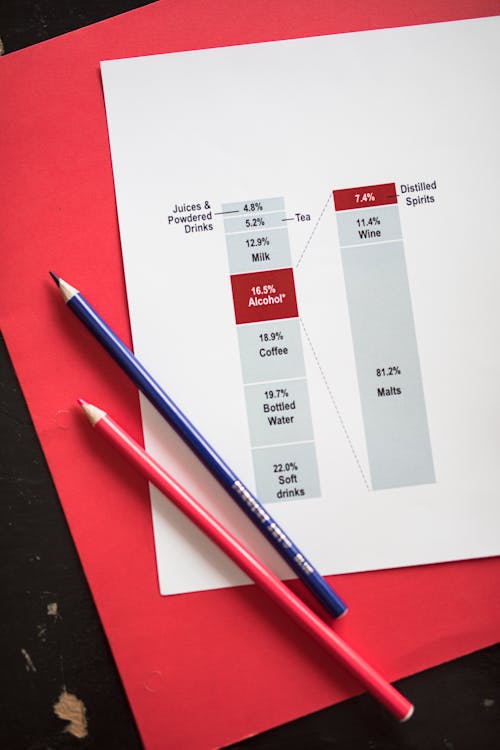Passport Product – What is it?
As a method for gathering and exchanging product data throughout its existence, Digital Product Passports (DPP) serve as an example of a product’s environmental, recyclable, and sustainable qualities. Product information that has been recorded at every stage of the supply chain, from procuring raw materials to the manufacturing process, is shared among various stakeholders and players on the DPP. In effect, this opens up benefits, use cases, and value within entire ecosystems.

The wider Digital Product Passport DPP idea will become more useful over time. For now, it is mostly being used in environmental, sustainable, and recyclable projects—all of which are included in the “circular economy” category.

How Digital Product Passports Affect Supply Chains
Transparency in the supply chain makes it possible to identify vulnerabilities and hazards early on. This enables quick decision-making to prevent expensive disruptions. Therefore, Digital product passports can assist companies in efficiently lowering risks. In addition, organizations can acquire useful insights into their supply networks and take proactive measures to solve possible concerns. These remedies are created through the execution of supply chain transparency programs.
Businesses may protect their business activities and bottom line by acting quickly and minimizing discovered vulnerabilities early on. DPPs are an important part of this risk reduction approach. They give companies full supply chain visibility and traceability.
These digital passports provide businesses with a wealth of information and data. They help in empowering consumers to promptly identify and manage possible hazards, resulting in smooth operations and maximum efficiency.
Understanding the European Green Deal
Innovative thinking alone isn’t the only thing driving businesses and product categories to adopt Digital Product Passports. The European Union has drafted a plethora of policies and regulations in Europe, mostly under the European Green Deal (EGD). The EGD carries the long-term objective of allowing the continent (Europe) to achieve net zero emissions by 2050. These legislations are either in the proposal or activation stage.

The Circular Economy Action Plan (CEAP) is more directly related to the subject of Digital Product Passports and their suggested use from a governmental (European Union) level. In addition, it is one of the EGD’s initiatives and went into effect in March 2020.
The circular economy strategy for Europe is outlined in the CEAP. The CEAP also includes other important objectives about reducing waste, guaranteeing product sustainability. It enables customers to make better-informed decisions about what to buy.
The targeted industries have been chosen per the requirements of the CEAP. They look at factors such as their present high waste qualities and current climate effect. In addition, they evaluate the potential for integration into wider EU circularity programs.
The prioritized industries include batteries and automobiles, textiles, electronics, ICT, furniture, plastics, buildings, and chemicals. These industries will all be covered by an EU DPP. By the end of the decade, all of these industries are anticipated to be fully utilizing DPPs.

Manufacturing Process of a DPP Explained
The following are some important components that are important for answering the question, ‘what is DPP’? Here, we look at completing the manufacturing process of a European Union DPP:
- It will be linked to a specific item identifier via a data carrier.
- The data carrier must be physically identifiable on the product, in its package, or on any supporting paperwork.
- The unique product identification and the data carrier must adhere to ISO/IEC 15459:2015 standard.
- The product passport must contain all information that is machine-readable, structured, searchable, and built using an interoperable format based on open standards.
- A certain model, QR code, batch, or item shall be mentioned in the information contained in the product passport.
- The precise access rights at the item group level shall be established in the relevant delegated act under Article 4, and access to the information contained in the product passport must be handled in compliance with the key standards outlined in Article 10.
Benefits of a Digital Product Passport
Through the creation of a digital twin of a physical product, a Digital Product Passport safely captures transactional, event, and sustainability-based data from the course of the product’s existence. The Digital Product Passport can be accessed by an application on a smart device, and the digital twin is typically linked to the physical object through a barcode, QR code, or other technology like NFC tagging.

For instance, a customer may scan a QR code on a clothing item’s label to be taken straight to the relevant Digital Product Passport, where they could examine information on the product’s ownership history, sustainability credentials, and even recycling instructions.
While the present regulations and extent of the European Commission regarding Digital Product Passports are primarily concentrated on gathering comprehensive product lifecycle data to offer a comprehensive understanding of its sustainability, recyclability, and circularity, the potential applications and advantages increase with the diversification of data collection methods. A lot of industries are ahead of the curve already, taking advantage of Digital Product Passport technology to open up new use cases about traceability, transparency, and traceability for the circular economy action plan.

The Impact of DPP on the EU Market
Even though the European Union has pushed Digital Product Passports through several laws, businesses outside of Europe will also need to use DPPs. Any product that is sold in the EU is required to abide by the relevant laws, which means that it must have a digital product passport attached to it, even if the business is registered outside of the EU.
To ensure cooperative cooperation with DPP rules and infrastructure in the circular economy, the EU will offer support to partner countries and hold open discussions with other international organizations. This is because the EU is aware that the consequent complexity might disrupt global supply chains and corporate ecosystems.
Digital Passport for Products
Despite being an EU rule, the DPP will have a significant global impact. For instance, a multinational electronics company with its headquarters located in North America that manufactures laptops in Asia before selling them in Europe must nevertheless abide by all applicable DPP laws. It therefore covers any product purchased or sold within the European market. Globally applicable standards will be achieved via the digital passport, regardless of the product’s manufacturing location or maker.

Bottom line
The European Union’s initiative to promote greener initiatives with the emergence of a digital product passport is a commendable approach in all its ways. With growing technological advancements, very soon the DPPs will be used and accepted as a norm all over the world. In this wake, companies should use efficient data management tools for even better data management. You can also contact us at Pimberly for top-notch data management tools around you.













